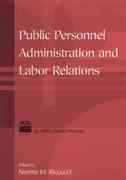Solve all the attached questions;
1. Taylor Swift wrote an op-ed article in the The Wail Street Journall speaking out against pirating I:i.e.1 illegally downloading] music and made news again recently2 because of her decision to remove her music from Spotiliy1 an online streaming music website1 The New York Til-nee3 reported. Responding to critics1 Daniel. Ek, Spotify's CEO, states Spotify is \". . . a platform that protects thern [music artists] from piracy and pays them for their mnem'ng work." Musical piracy is an increasingly popular topic of debate with policymakers having to decide whether or not to change laws in order to adapt to rapidly changing technology. Further, the music industry puts more premure on policymakers in order to protect their 15: billion dollar a year industry. As a consequence, economists have examined the impact of music piracy on music sales. Essentially, the following studies want to estimate an equation along the lines of seles=u+lpiracy+X+u [1] where soies is quantity of album sales1 piracy is a variable representing the amount of illegally downloaded music, I is a matrix ofexplanatory {control} variables\ii. [12 points] Assume a representative random sample of the population is obtained. However, two of the key survey questions used to generate data for the study are: How many CDs have you purchased in the past year and what was the average price paid? How many electronic files have you acquired through peer-to-peer file-sharing networks ftor- rents? Given how the data are collected, what is the potential concern? Identify the problem, if any, and comment on the consequences for the dependent variable and the independent variable, if affected. Explain.iii. 10 points] Assuming the data used in the paper are sound. Why are the authors unable to use ordinary least squares (OLS) to obtain causal estimates? Explain.iv. [15 points] The paper instruments for piracy by using internet skills (skills) whereby a re- spondent reports their respective level of internet expertise (sophistication). The first-stage regression is piracy = 0.037 + 0.790skills - 0.002price - 0.030student + 0.036 female - 0.249region (robust se) (0.339) (0.142) (0.010) (0.146) (0.080) (0.077) What are the two important criteria for a valid ("good" ) instrumental variable (IV)? Can the two criteria be tested? Does the authors' IV meet these two criteria? Explain.ii. [10 points] What is the key assumption underlying the validity of a DID estimate to be con- sidered causal? Can it be tested? Explain.iii. [10 points] What is the estimated effect of Sweden's copyright protection reform? In other words, interpret the coefficient and comment on statistical significance at the 95% confidence level.in." [12 points] The paper uses robust standard errors. What are the authors concerned about: i.e., why are robust standard errors used? What would the consequences be if the problem the authors are 1III.I'orried about is not addressed? Explain; v. [13 points] It is possible that some file sharers simply started hiding their activities using technical solutions such as proxy servers or virtual private networks (VPN) in response to the reform. Assuming VPN is an omitted variable, in which direction is the estimate for reform biased? Does this affect the qualitative conclusion that the reform increased music sales; i.e., does it help or hurt the authors' conclusion (treatment effect)? Explain ensuring you show the correlation between VPN and sales and VPN and reform














